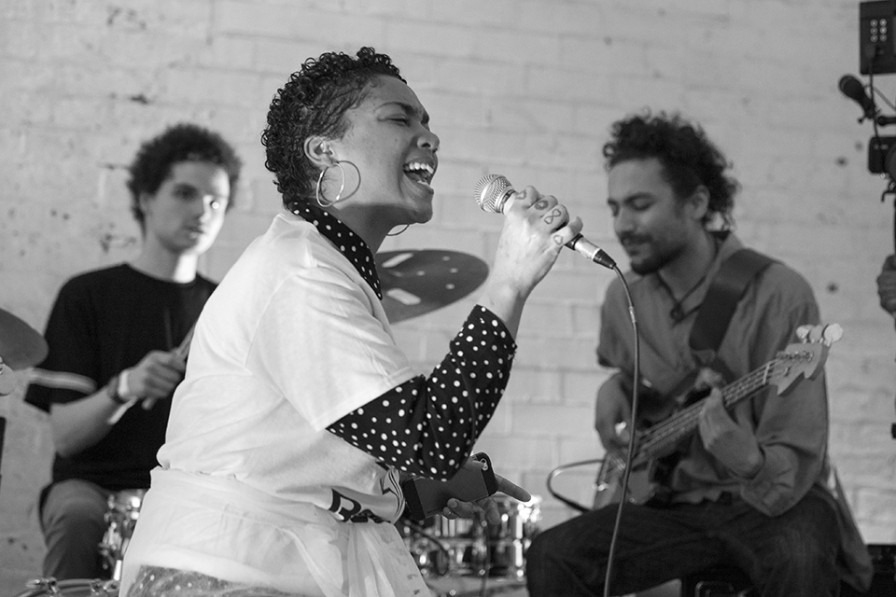Inclusion Beyond Pride

Music has increasingly provided a powerful platform for LGBTQ+ individuals to express themselves. Whilst 5% of people in the UK identify as LGBTQ+, young people are more than twice as likely to identify as lesbian, gay, bisexual or another minority sexual orientation than the overall population, according to the England and Wales 2021 census.
And, last year, 46% of grassroots music projects Youth Music invested in, reported working with young people from the LGBTQ+ community.
Around 40% of LGBTQ+ people experience a mental health issue, compared to 25% of the wider population. These figures increase for trans people and those with multiple marginalized identities; for example, LGBTQ+ people who are also part of the Global Majority or Disabled (National LGBT Survey 2018, Williams Institute, 2014 and London Mayor’s Report, 2017). This puts a responsibility on music projects who work with young people to ensure their spaces are safe and inclusive space for LGBTQ+ young people.
Pride month saw the music world recognise groundbreaking LGBTQ+ artists and celebrate increased representation. However, Pride also reminds us that there is still crucial work to be done in the fight for LGBTQ+ rights.
So, what could you be doing to include this group, which is so often marginalised, yet such a large proportion of our demographic?
Creating inclusive environments
Ensuring staff and volunteers have training and support around LGBTQ+ awareness and discrimination is often the first step.
As part of Youth Music’s Exchanging Notes programme, Come Play With Me delivered training in Trans Inclusion and LGBTQ+ inclusion. They shared their top tips for making your organisation more LGBTQ+ inclusive. One thing they emphasised was the importance of visibility. Including pronouns on badges, lanyards, and email signatures – for young people and staff – sending a signal of safety and inclusivity. As Toni from Come Play with Me pointed out, “…it gives people the space to really be themselves, and not have to waste energy and time having to navigate telling people they’re trans or LGBT etc.”
Having LGBTQ+ role models – either artists or music leaders, and including LGBTQ+ imagery in marketing and communications - ensures young people can see other people like them, so that they feel represented, inspired and motivated to be themselves. If you’re looking for early career role musicians to discuss, check out these Youth Music NextGen LGBTQ+ artists on the rise.
Inclusive policies and procedures
It’s also essential that whilst increasing visibility across your organisation, your internal policies and procedures are inclusive too. By ensuring that you embed a culture of challenging homophobia, biphobia and transphobia, you build the foundation to create an inclusive space.
Emphasising your confidentiality policies will help young people to feel safe in disclosing aspects of their identity. Perhaps you collect monitoring data about people’s gender identity or sexual orientation. Are you confident that you’re framing these questions in a way that avoids any direct or indirect discrimination? Mind Out and Mind have a good practice guide which explains the key considerations.
While creating an inclusive environment, it’s important to recognise it’s an ongoing mission that involves constant learning, adapting and improving. Language is always evolving, pushing us to use new words and phrases that differ from previous norms. Using gender neutral language – avoiding the term ‘boys and girls’, or speaking of people as ‘they’ if you don’t know their gender – are good examples.
Cee Haines from Youth Music funded partner, Brighter Sound, explains in this short video, Having People’s Backs, that “the struggles of minority communities are not always obvious to outsiders”. Cee Haines (CHAINES) is an award-winning composer and multi-instrumentalist who writes surreal and fantastical electronica and electro-acoustic music. They ask, “have you ever looked at a room full of teenagers you assume to be boys and ever considered that one of them could be a trans woman who hasn’t figured out who she is yet?” Having links with local LGBTQ+ organisations or support services means you can signpost young people who might need support. If you’re not sure what exists in your area, the Consortium for LGBT+ communities’ member directory is a good starting point.
Cee explains: “You can’t help people overcome barriers that you don’t perceive. If you want to bring equity in your organisation, you’ve got to commit to that long term relationship. When you listen and demonstrate that understanding, then you let folks know that they’re safe, they’re wanted, and you’ve got their back.”
This comes back to one importance principle: listen to young people, on an ongoing basis. By creating the space for them to be heard, they will be the ones to show you how to truly support them.
So, what changes can you make today to let young people you work with know that you’ve got their back not just during Pride, but year-round? To drive real change, we can all play a part in inspiring other music projects and professionals nationwide.
Visit https://youthmusic.org.uk/advocating-inclusion to find out more.

